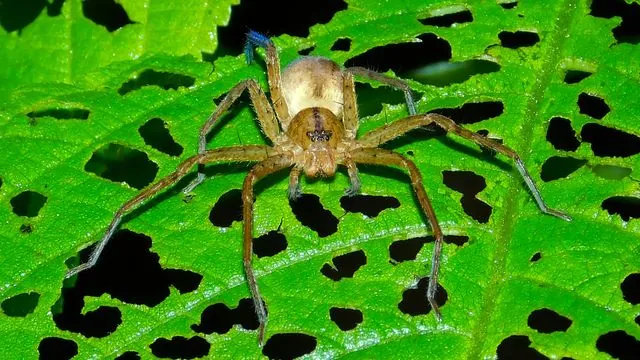
Unlocking Spider Social Secrets: What Researchers Discovered Inside Their Tiny Brains
2025-09-22
Author: Emma
Exploring the Enigmatic World of Social Spiders
In a groundbreaking study, researchers delved deep into the brains of huntsman and crab spiders, revealing astonishing insights into their social behavior. Using micro CT scanners, they found that social spiders possess unique wiring that enhances their memory, recognition, and collaboration skills.
Dr. Penna-Gonçalves, a data scientist at Macquarie University, expressed her astonishment at discovering over a hundred spiders thriving in a communal habitat. This research, recently featured in Integrative Zoology, challenges conventional wisdom about spider intelligence indicating that size doesn’t always determine brain function.
The Rarity of Spider Sociality
Only a mere 0.1% of the planet’s 53,000 spider species exhibit social behavior, making this research all the more fascinating. Most spiders are solitary and territorial, often exhibiting aggressive behaviors towards one another.
Dr. Penna-Gonçalves describes a fascinating phenomenon known as ‘lazy to launch,’ where juvenile spiders refrain from dispersing after their first molt and choose to linger at home. This extended maternal care leads to reduced cannibalism among young spiders and encourages collaborative hunting.
New Techniques Unveiling Spider Brains
To uncover the complexities of spider brains, Dr. Penna-Gonçalves developed innovative neuroimaging techniques, refining her methods for nearly two years. This meticulous process allowed her team to distinguish various brain structures essential for understanding spider behavior.
Unlike many animals, spiders' brains reside in their cephalothorax, surrounded by formidable muscle and tissues, making them particularly challenging to study.
Intriguing Structural Differences
In examining comparisons between social huntsman and crab spiders with their solitary counterparts, researchers were surprised to discover no significant difference in overall brain size. However, social huntsman spiders boasted enlarged areas associated with memory and cognition, indicating their enhanced social capabilities.
Contrarily, social crab spiders showed expanded visual processing areas, hinting at their unique social structures that diverge from those of huntsman spiders.
The Evolution of Cooperation
One of the study's most exciting discoveries is that social huntsman spiders exhibit smaller venom glands compared to solitary species. This illustrates how cooperation within these species can provide evolutionary advantages, as shared hunting diminishes individual energy costs.
Dr. Penna-Gonçalves emphasizes this finding, stating that communal prey sharing means each spider can wield less venom to secure meals, a significant energy saver.
Insights into Spider Intelligence
Remarkably, ongoing research suggests some spiders may even experience sleep and dream states, hinting at a level of complexity once thought impossible in invertebrates. Professor Marie Herberstein mentions that the team's findings could reshape our understanding of intelligence, revealing that neuron connections—rather than sheer brain volume—may indicate cognitive prowess.
Future research aims to explore how social interactions during development impact spider brain structure, potentially unlocking further secrets about their intricate behaviors.









 Brasil (PT)
Brasil (PT)
 Canada (EN)
Canada (EN)
 Chile (ES)
Chile (ES)
 Česko (CS)
Česko (CS)
 대한민국 (KO)
대한민국 (KO)
 España (ES)
España (ES)
 France (FR)
France (FR)
 Hong Kong (EN)
Hong Kong (EN)
 Italia (IT)
Italia (IT)
 日本 (JA)
日本 (JA)
 Magyarország (HU)
Magyarország (HU)
 Norge (NO)
Norge (NO)
 Polska (PL)
Polska (PL)
 Schweiz (DE)
Schweiz (DE)
 Singapore (EN)
Singapore (EN)
 Sverige (SV)
Sverige (SV)
 Suomi (FI)
Suomi (FI)
 Türkiye (TR)
Türkiye (TR)
 الإمارات العربية المتحدة (AR)
الإمارات العربية المتحدة (AR)